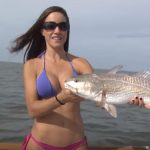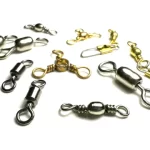The frog is one of the best topwater lures of all time. Getting crushed by a huge bass on a frog is one of the most exciting feelings. Here are some of the top tips for fishing with frogs.
Typically, frogs are fished over grass mats and lilypads. The predator fish may waylay the frog in the openings, but might just as readily blow up right through the weeds to nail the bait. The virtue of hollow-bodied frogs is their buoyancy. They ride over mats and can be paused and worked in the same place, often triggering an annoyance strike from bass.
While hollow-bodied frogs typically have “legs” made of several strands of rubber or silicone, toads have kicker tails or boot feet and churn the water much like a buzzbait.
However, the single wide-gap hook typically used with them rides upright imbedded in a hook slot, making the toad far more weedless than a buzzbait. Generally, toads should be kept moving to be effective.
A toad works best for covering water, while a frog is best for thoroughly working a high-potential area and, perhaps, provoking an anger response, if nothing else.
FROG WATER
When fishing frogs, most anglers steer their bait over openings in the grass, pausing if using soft-bodied frogs. When tossing toads, a frequent tact is to cast right along the edge of the weeds, enticing any bass that has positioned itself there to ambush prey.
While it’s not universally accepted, some frog fishermen recommend using a frog only within casting distance of shore. The theory is, amphibians don’t venture far from land and bass aren’t used to seeing (or eating) frogs far out in the water.
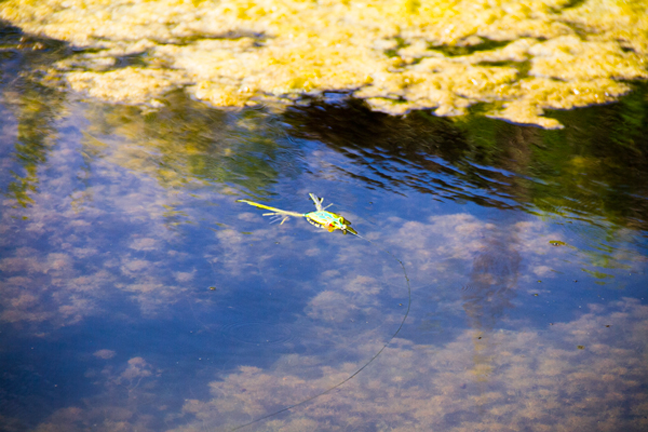
At what time of day is frog fishing best? No one really knows. Typically, topwater baits are most effective early or later in the day and can be effective all day under cloudy skies with a slight ripple on the water.
Moreover, there can be a flurry of activity, followed by a sudden and absolute stoppage that seems inexplicable. Very often, you’ll find there are “good” frog days and “bad” ones. Oh, the fish will tell you which is which; they just won’t tell you why.
FROGGING TOOLS
Frogging gear has been refined in recent years. Rods are made specifically for frog fishing, for example. A “frog” rod is most often a 6-foot, 10-inch to 7-foot, 4-inch, medium-heavy- to heavy-power, fast-action graphite rod with a strong butt section.
Hollow-bodied frogs typically have a weight inside to ensure they land upright, and solid toads have considerable soft-plastic mass; both are easily castable. The tip of the rod has to be firm enough to collapse the hollow body of the frog and drive the (usually) twin hooks into the fish. In the case of a toad, it has to yank the hook out the slot and into the bass’s jaw.
Any high-speed baitcasting reel can work well for frogging. A frog is slowly worked across a mat with the rod tip, not the reel. A high-speed reel allows you to recover and cast back out faster once the bait is out of the strike zone. Also, a high-speed reel will more easily keep a toad up and moving across the surface.
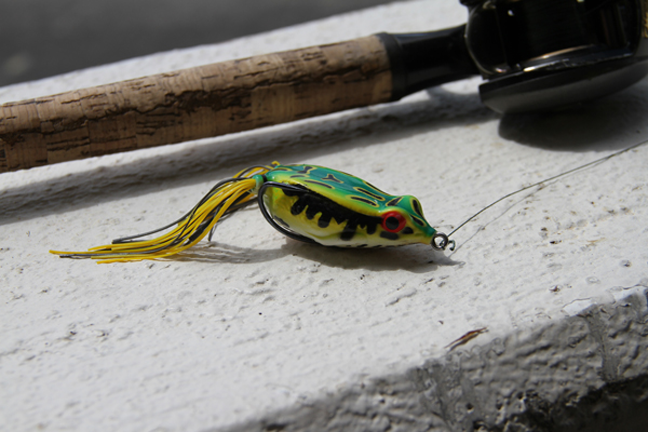
The big breakthrough in frog fishing has been the advent of braided line. Braid floats and although it’s more visible than mono and fluoro, it doesn’t seem to discourage bites in grass. Moreover, it’s incredibly strong, sawing through weeds as you struggle with a lunker buried in vegetation.
Further, because of its lack of stretch, it transfers the full energy of your hookset, helping the hooks clear the plastic and pierce deeply into the fish’s jaw. Depending on the density of the grass mat or pads and the size of the bass anticipated, most anglers opt for 50-, 65- or 80-pound braid.
JUMPING INTO FROGGING
Largemouth bass will do some crazy things when confronted by a frog. Some will ignore it, some will eat it, some will attack it, and others are just downright rude. A fish that is feeding will often attempt to stun a frog by shooting up from below and knocking it into the air. The fish doesn’t miss the bait; it isn’t trying to swallow it. The bass intends to reacquire the stunned amphibian and down it while it’s impaired.
Other times, bass that aren’t hungry and are fed up with your offering will swim over to it, then snap around and slap it with their tail. I’ve had bass knock my frog 10 feet into the air. The weirdest thing you are likely to encounter is a bass rocketing up out of the water and diving onto your frog. I’ve missed my share of bass while frogging, but I was always mightily entertained.
While a toad is most often just cast out and reeled in, a frog is carefully worked across the surface. Some anglers steadily twitch all the way through the target area, while others favor a subtle approach and leave the frog in place for several minutes, offering only the occasional twitch.
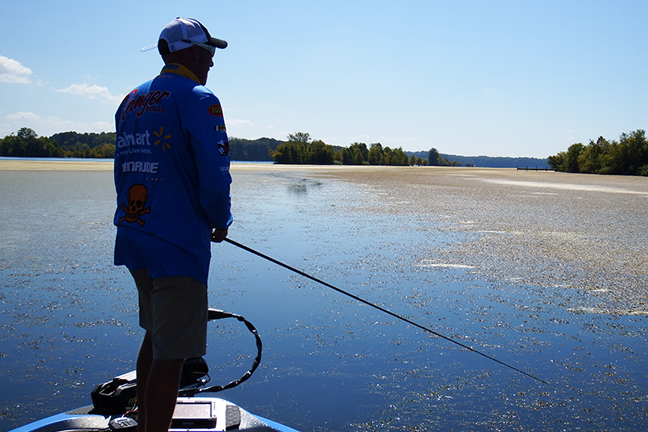
Still others work a frog as sort of a weedless Spook, walking the dog with it. (The Boze ZZ Walker and new Spro Bronzeye Shad are particularly good for this.) A technique originally peculiar to Florida but now being seen elsewhere is to use the frog at fairly close range. It is tossed out with an underhand pitch, then worked in a tight, fast, gentle walk-the-dog action.
The most challenging aspect of frogging, aside from figuring out where the fish are under a grass mat, is the hookset. As we said, bass often blow up on a frog with the intention of stunning it. That spray of water has triggered many a premature hookset that resulted in a missed fish. The key to better frog fishing is patience and the refusal to be amazed.
No matter how startled you are by that geyser of water and weeds that just erupted under your frog, you have to remain calm — and do nothing. The fish will find your traumatized frog if you give it time. When it does, wait until you feel tension on the line; forget what you see and rely on feel. Once you feel the fish, rear back with everything you’ve got and drive the hooks home.
If the fish doesn’t circle back to your bait, or if your bait was moving at the time of the strike such that it is now out of the zone, quickly toss a “comeback” lure into the location of the blowup. The Senko is often favored for this, probably as it effortlessly resembles a stunned prey fish. The bass doesn’t stop to wonder what happened to the frog; it just takes the Senko and runs.
Frog fishing gets going with the heat of summer, but that may be because that’s when grass canopies fully form. Grass mats and pads give anglers a target, but also limit our options. You can pull frogs and toads across the top, or punch the mats with heavy jigs or Texas-rigged plastics; that’s about it.
Some anglers turn away from summer mats and look for deep ledges to probe or docks to skip. Oh, I’d love to skip docks, too. In fact, I’d love to skip them altogether. But frogging? I’ll jump at the chance.
All credit for these tips goes to Game and Fish. https://www.gameandfishmag.com/editorial/frog-fishing-for-bass-101/193107

